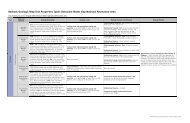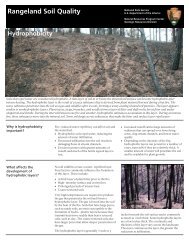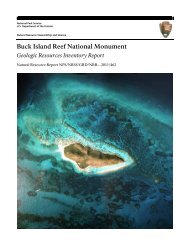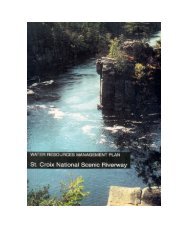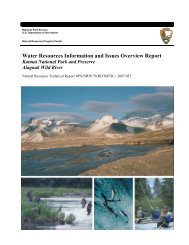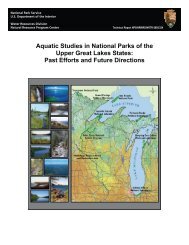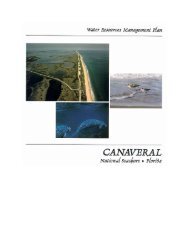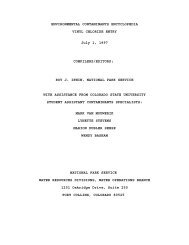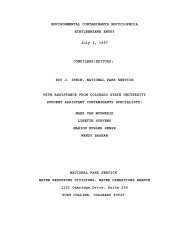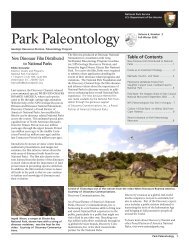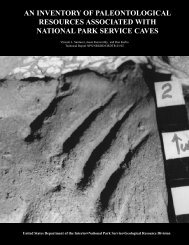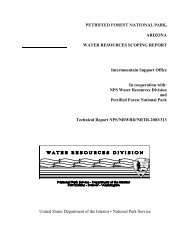Naphthalene, C1 - National Park Service
Naphthalene, C1 - National Park Service
Naphthalene, C1 - National Park Service
Create successful ePaper yourself
Turn your PDF publications into a flip-book with our unique Google optimized e-Paper software.
W.Human (Drinking Water and Other Human Concern Levels):<br />
No concern levels found; for information on<br />
drinking water supply levels, see W.Typical Section<br />
above.<br />
Compare total naphthalenes to naphthalene<br />
concentrations (see naphthalene entry).<br />
W.Misc. (Other Non-concentration Water Information):<br />
<strong>Naphthalene</strong> (the parent compound) was predicted not to be<br />
phototoxic using QSAR estimates [891]. Alkyl PAHs often<br />
(there may be exceptions) tend to be equally phototoxic<br />
to the parent compound PAH (see "PAHs as a group" entry).<br />
Information from on 2 methyl naphthalene from the HSDB<br />
[366]:<br />
Exposure of the dungeness crab (c magister) larvae<br />
to seawater soln of the water sol fraction (wsf) of<br />
cook inlet crude oil showed that the concn of<br />
aromatic hydrocarbons in wsf was inversely related<br />
to the degree of alkylation in naphthalene family,<br />
but the acute toxicity of the aromatic cmpd was<br />
directly related to the degree of alkyl<br />
substitution. The seawater concn of 2methylnaphthalene<br />
in water sol fraction of cook<br />
inlet crude oil was 0.03 + or - 0.001 MG/L.<br />
Sediment Data Interpretation, Concentrations and Toxicity (All<br />
Sediment Data Subsections Start with "Sed."):<br />
Sed.Low (Sediment Concentrations Considered Low):<br />
No information found. Compare total naphthalenes to<br />
naphthalene concentrations (see naphthalene entry).<br />
Sed.High (Sediment Concentrations Considered High):<br />
Methylnaphthalene (isomer not specified) was detected in<br />
contaminated and non-contaminated estuarine sediments.<br />
Reported average concentrations were 50.4 and 55.3 ppb<br />
(ug/kg) methylnaphthalenes at 10 and 25 miles from an<br />
offshore coastal multiwell drilling platform. The<br />
concentration in nearby uncontaminated estuarine<br />
sediments was 1.9 ppb (ug/kg) [766].<br />
1-Methylnaphthalene was detected in 93.8 percent of<br />
urban-bay samples in the Puget Sound area. The mean<br />
concentration was 52.06 ug/kg dry weight (ppb), while the<br />
median concentration was 52 ug/kg (ppb) [852].



